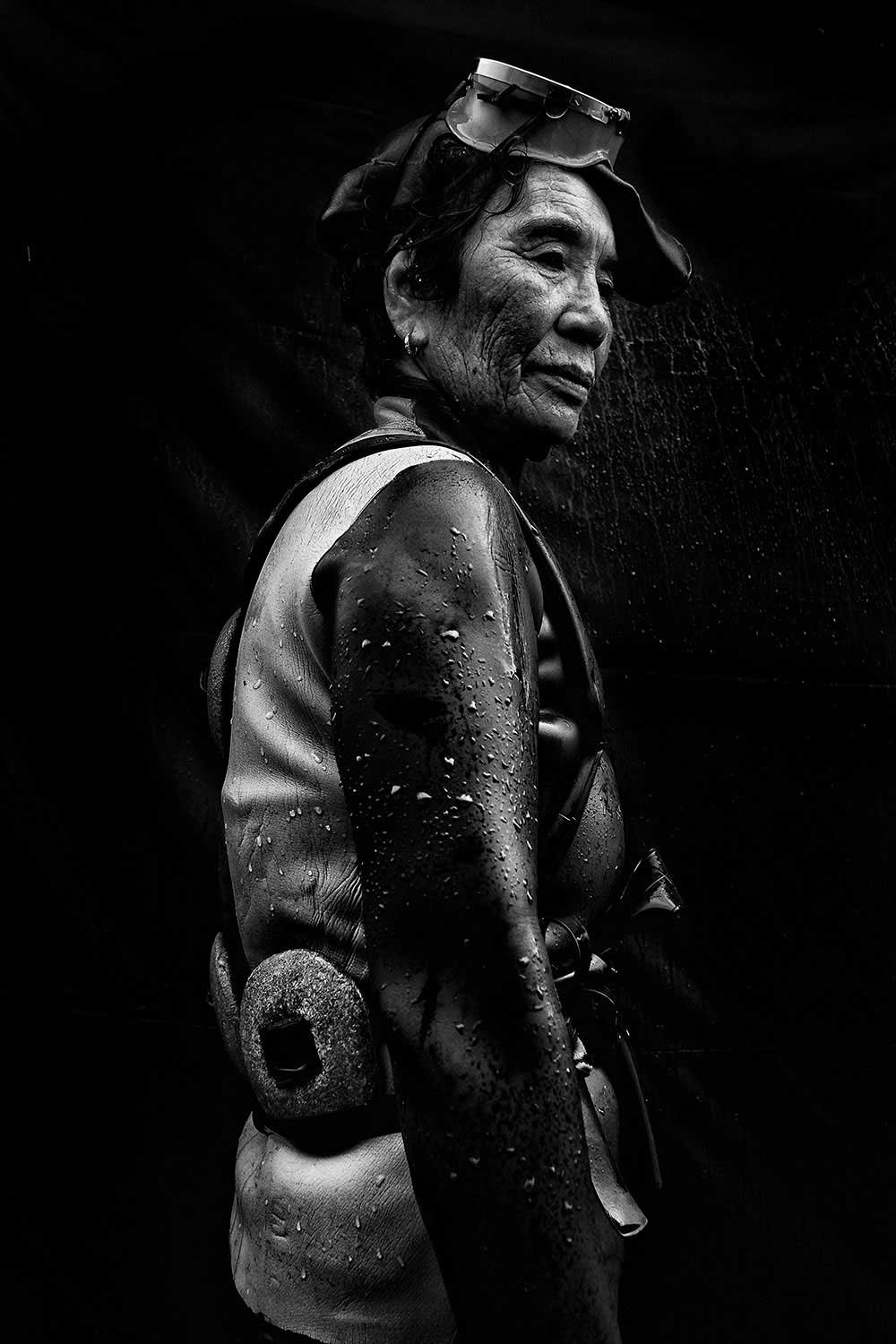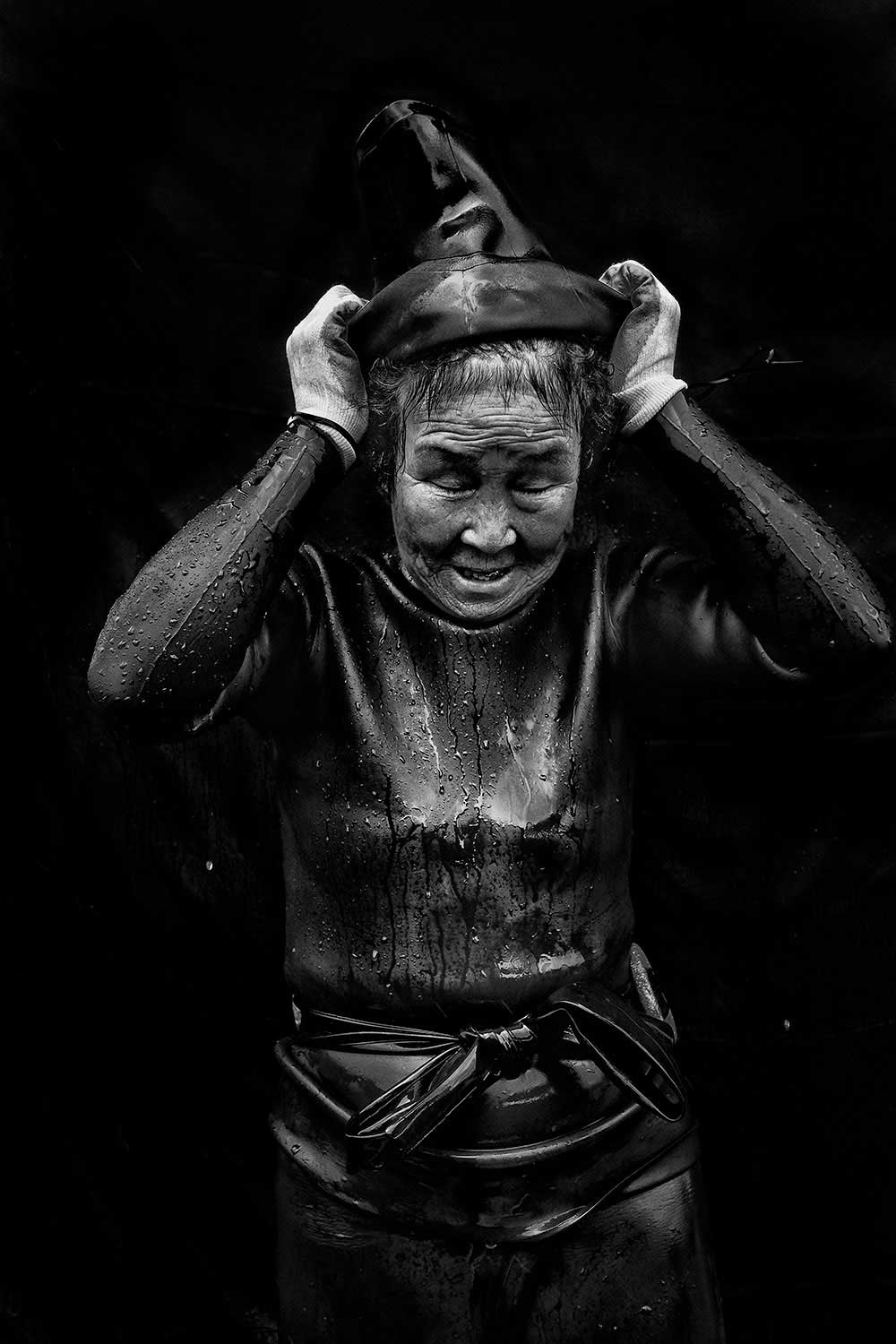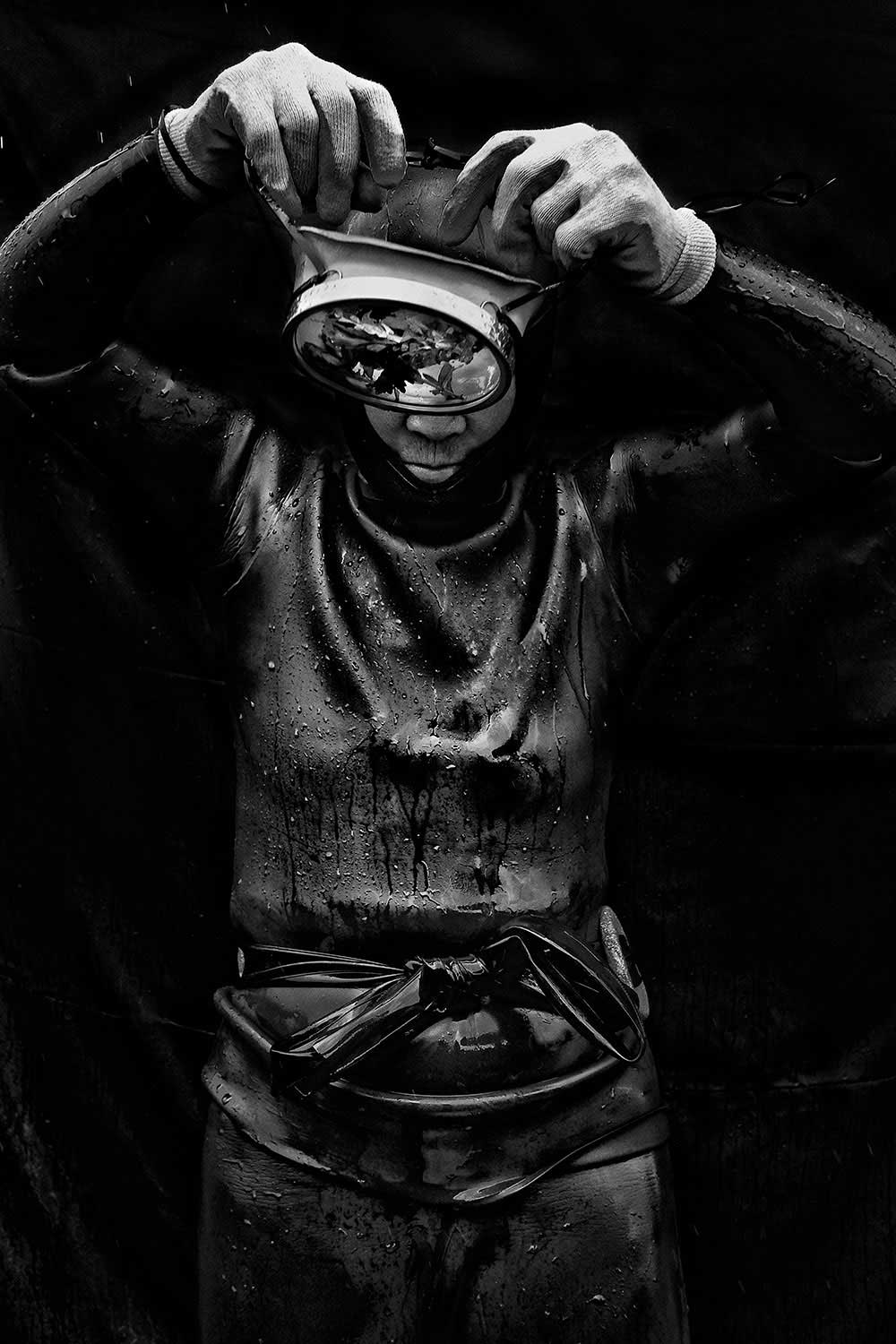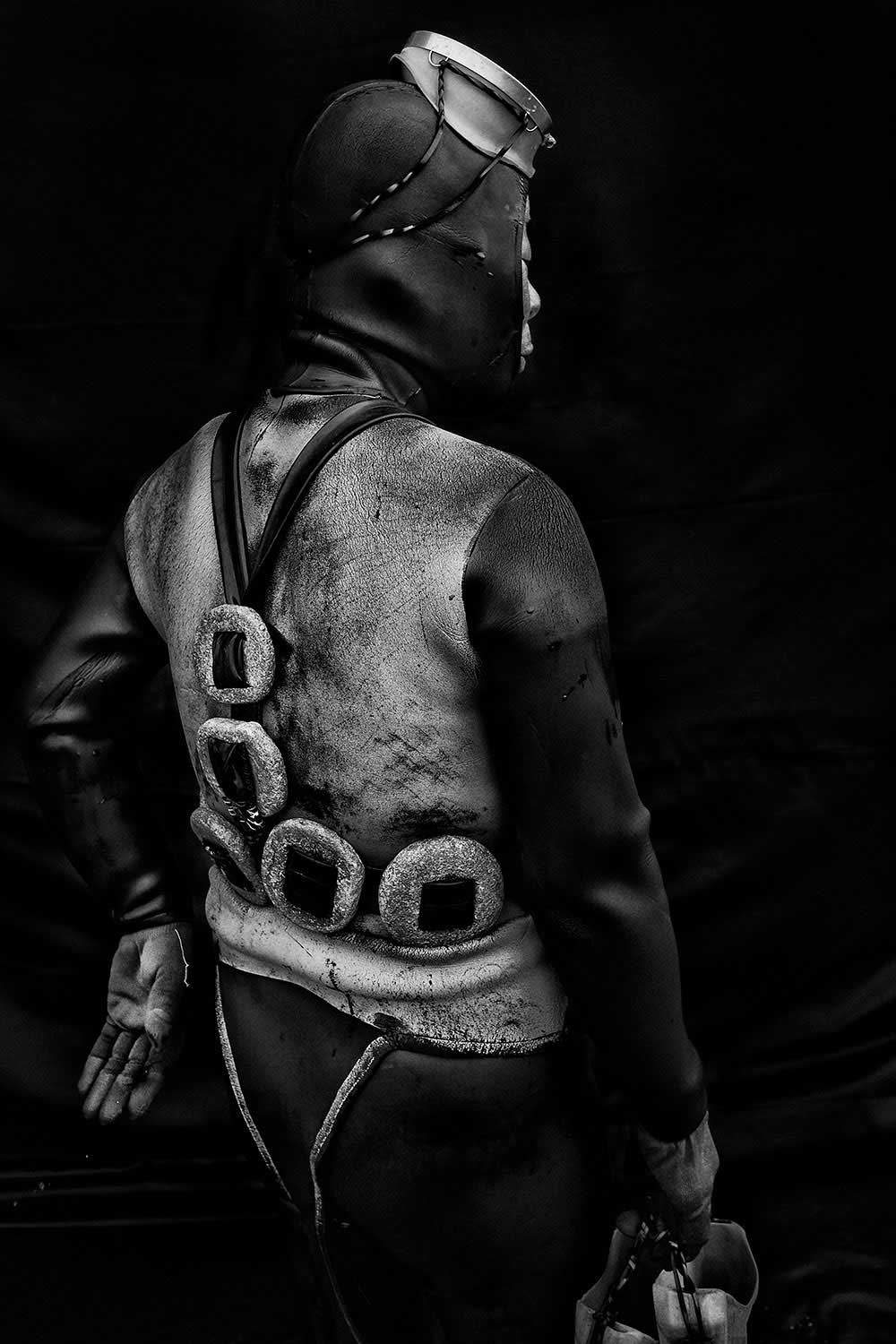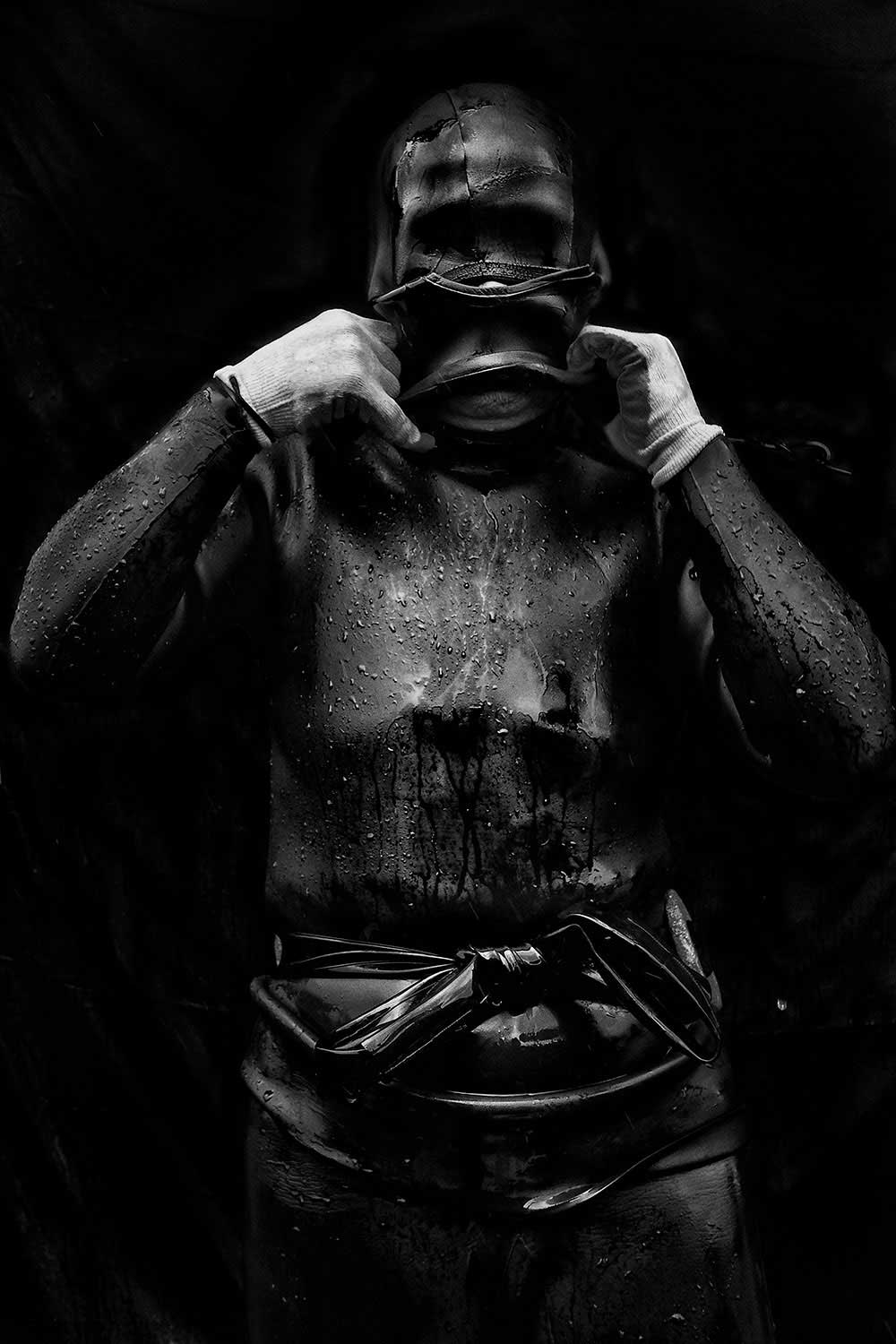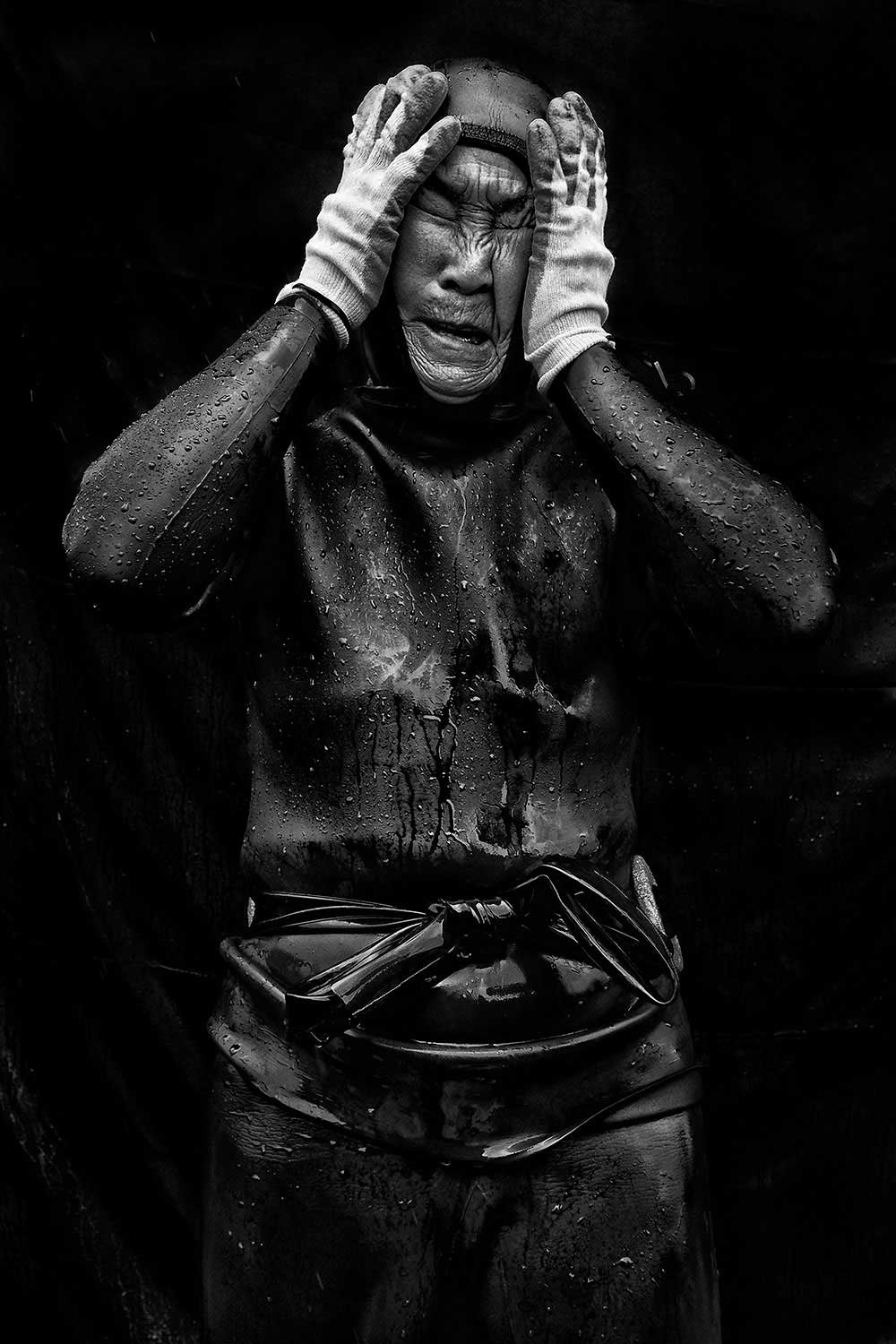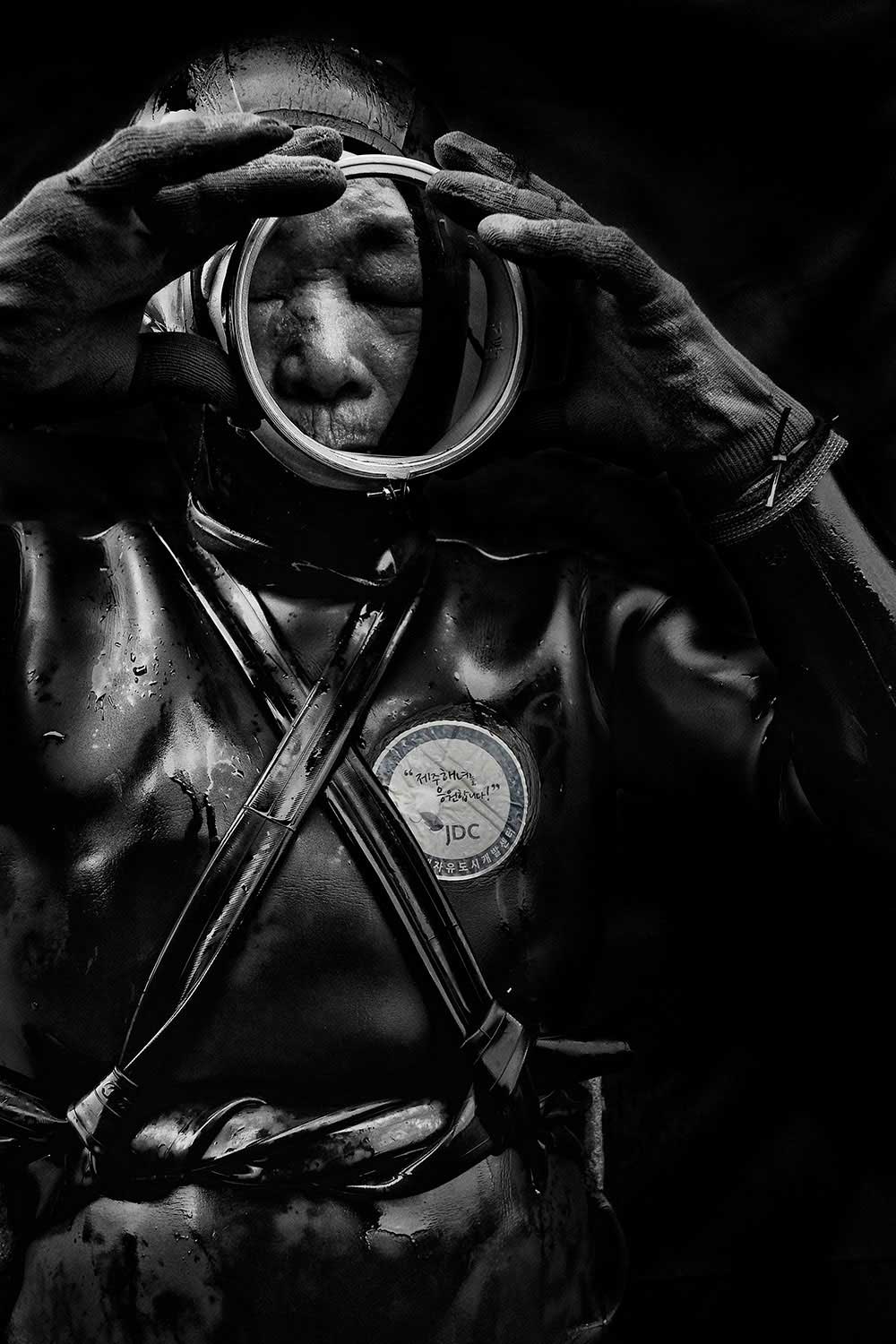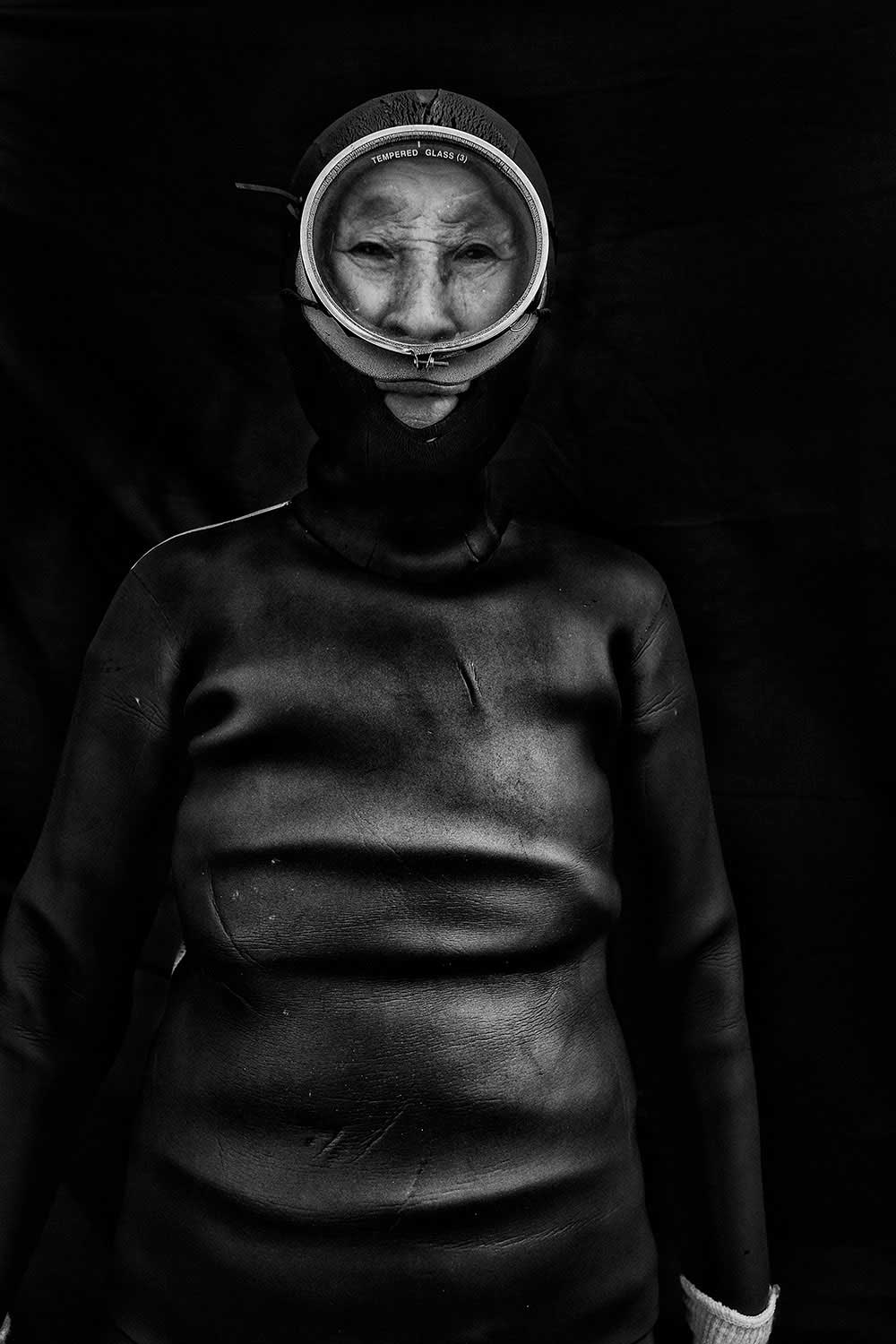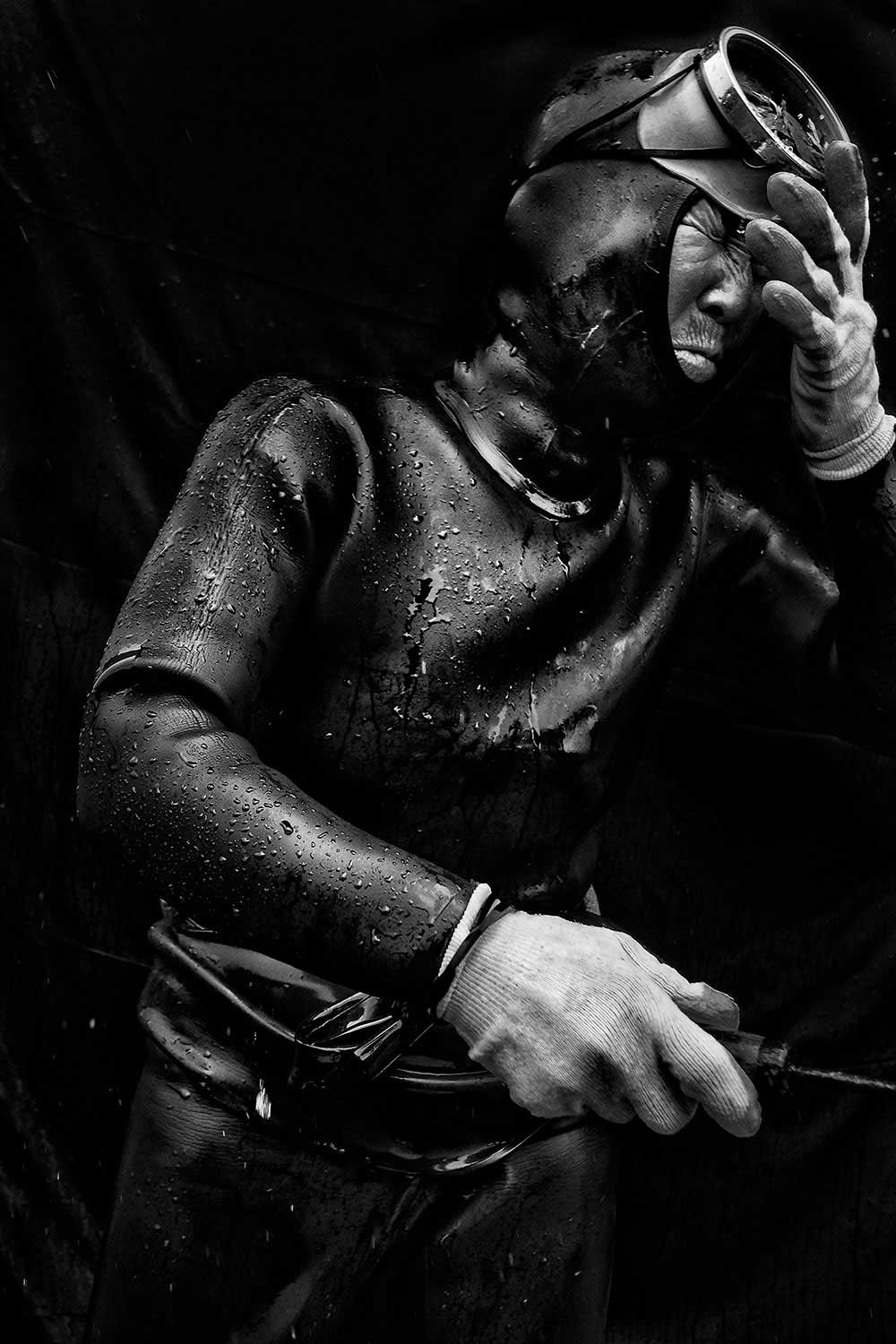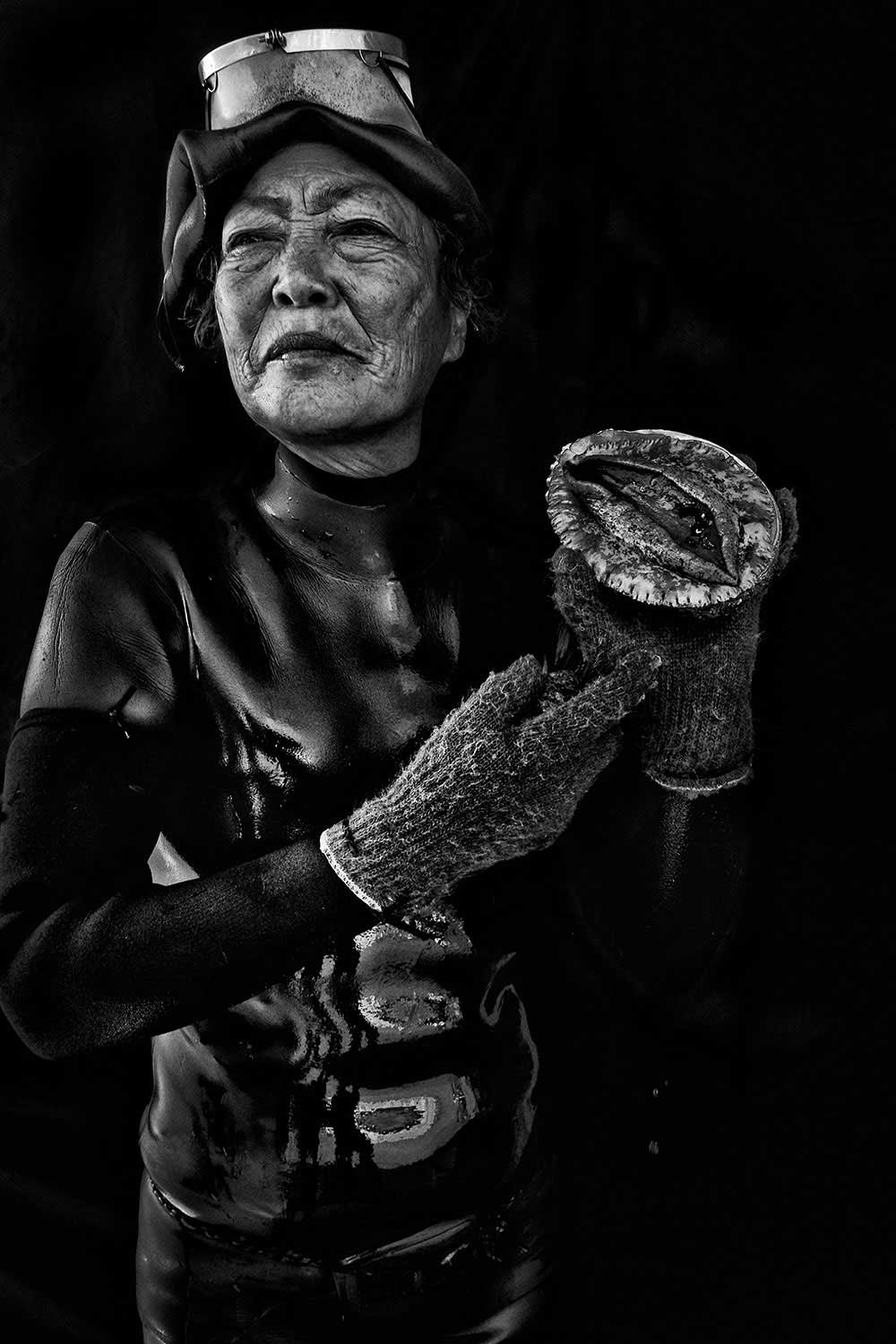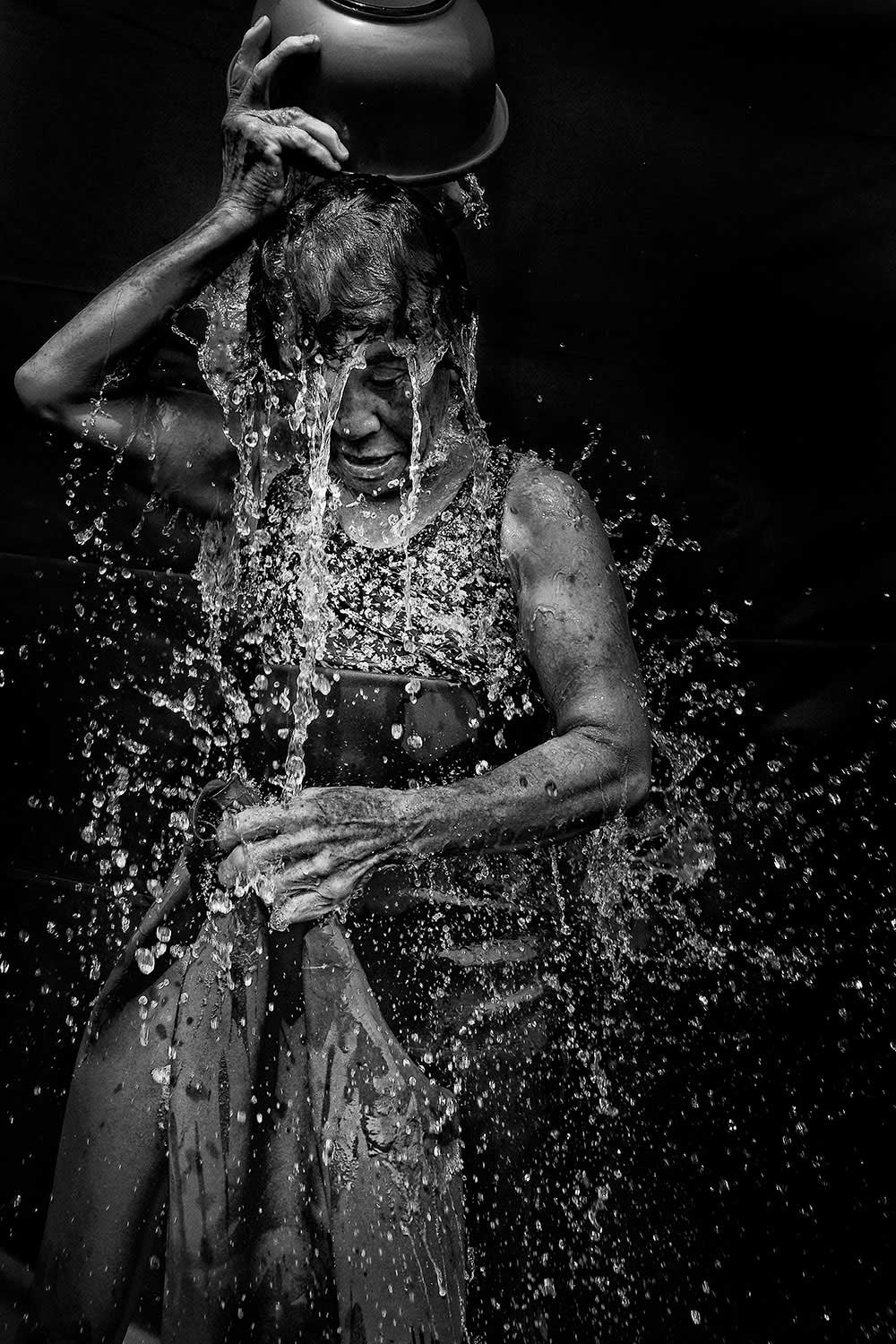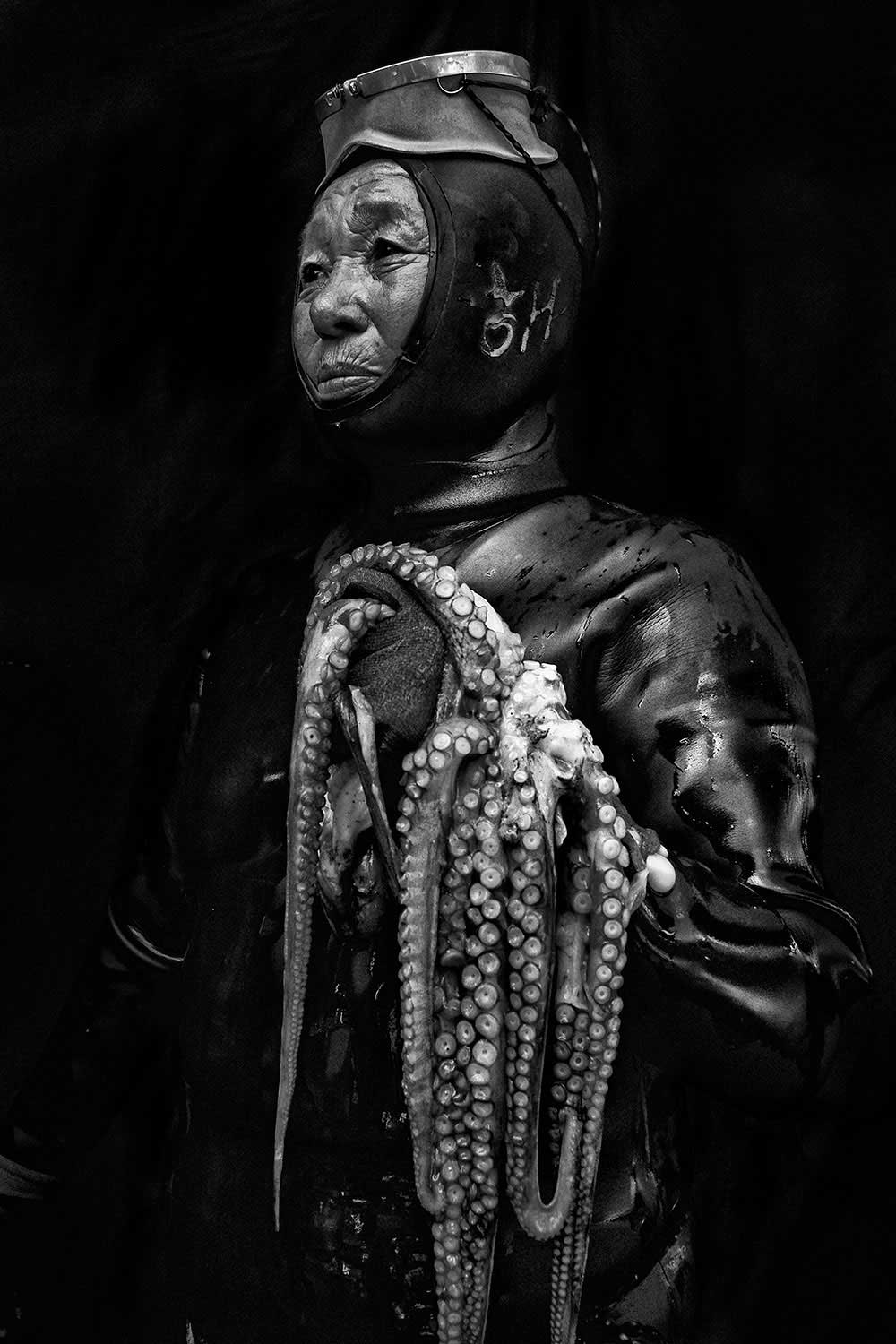South Korea, Jeju island, known for its characteristic basalt volcanic rock, sits off South Korea. It is the home of the renowned Haenyeo or women of the sea who free dive off the black shores of Jeju harvesting delicacies from the sea.
Wearing thin rubber suits and old fashioned goggles, this aging group of women are celebrated as a national treasure and inscribed on the UNESCO list of Intangible Cultural Heritage, but the tradition is slowly fading as fewer women choose this extremely hazardous profession. Today, the majority of Haenyeo are over the age of 50 and many are well over 70. In a society obsessed with education, the future of this physically arduous activity would appear bleak, and yet… Efforts by the government and local communities to preserve and promote this ecological and sustainable lifestyle have brought renewed interest from young people disillusioned with urban life and eager to return to their roots. It is perhaps a Renaissance.
With a lifestyle that embodies all the buzzwords of the moment – natural, ecological, sustainable – the Haenyeo (women of the sea) of South Korea, may be the last modern heroines whose story must be told. Though they are the pride of the nation, beyond the rugged shores of their home on Jeju island, little is known of these women dressed in thin rubber suits and old-fashioned goggles, who harvest delicacies from the sea using only their breath.
Despite conservation and promotional efforts by the government and local communities, this traditional lifestyle, practiced by an aging group of women over 50 and many over 70, is slowly fading as fewer choose this extremely hazardous profession. For this series, I decided to shoot portraits in front of a hanging black cloth. The idea – black on black – was to block out all distractions. In the case of the Haenyeo, it was particularly effective in emphasizing their physical features and typical gestures.
I knew from previous experiences with the Haenyeo that it would be difficult to convince them to come and pose in front of my backdrop so I hired a fixer; a young student from Jeju who spoke English as well as the local dialect. He was able to establish contact and ask them to simply do what they normally do; adjust their wet suits, weight belts and masks, remove equipment, rinse off, or simply show off their catch. Part of his task was to ask basic questions like name, age, where they were from, how long they’ve been diving, etc. The distraction put them at ease for a few seconds in front of the camera.
And how I started this project.
I arrived in South Korea in December 2017 and visited all the major sites in the country for six weeks, including PyeongChang, which was preparing for the 2018 Winter Olympics. After about a month of freezing cold weather, I decided to visit Jeju island for its warmer temperatures.
I knew about the Haenyeo but hardly saw any until one day I caught a few of them coming out of the water in a bay. Their wetsuits, shimmering with the water running off against the black basalt rocks in the distance, gave me the idea to shoot them in portrait style on a black background. But January was obviously the wrong season so I decided to return in September. I thought that two weeks would give me enough time, but a typhoon off of Japan was creating very bad weather and diving was too dangerous. With my fixer, we drove around the island every day, stopping at each village looking for divers and trying to make arrangements, but they were not diving. Luckily, the Jeju Haenyeo Museum was organizing a two-day festival showcasing Haenyeo traditions and despite bad weather, I was I able to shoot near Seongsan Ilchulbong. I installed my black cloth against the wall of a typical Haenyeo house (made of volcanic basalt rock) in the pouring rain and blowing wind, but the difficult conditions gave the pictures they look as the water dripped off the black wetsuits. A few women refused to participate which was terribly disappointing as my fixer and I was very respectful in asking permission and careful not to disrupt their work. One week later, I managed to shoot a group of Haenyeo returning from a dive near the village of Seongsan. I quickly set up my backdrop on the side of the Haenyeo house, and as they went about unloading their nets, removing and cleaning their equipment, I was able to work. Over those two weeks in Jeju, I only managed to have a few hours of shooting, but it seems that the harder the circumstances, the better the results!
About Alain Schroeder
Belgian photographer Alain Schroeder (b. 1955) has been working in the industry for over four decades. During his tenure as a sports photographer in the 80s, his shots appeared on more than 500 magazine covers. Book assignments and editorial pieces with subjects as diverse as travel, art, culture and human interest followed and in 1989, he co-founded the Belgian photo agency, Reporters.
In 2013, he uprooted his life, trading-in his shares in Reporters to pursue life on the road with a camera. Schroeder now travels the world shooting stories focusing on social issues, people and their environment. «I am not a single shot photographer. I think in the series, » he says, adding, «I strive to tell a story in 10-15 pictures, capturing the essence of an instant with a sense of light and framing. » His pictures have won many awards, including three World Press Photo 1st prizes in 2018 and 2020. [Official Website]



